Innovation breakthroughs often come from a need or a necessity. In this era of professional rugby, attacking play definitely needs a new innovation cycle to catch up with where defence has evolved.
Athletes have become machines in defence, conditioned to provide relentless line speed and bulked to smash runners backwards all day. They are so fit they are able to handle this task longer than ever. In a pursuit to make the game faster, the ruck naturally became less of a contraction force with rule changes aiding faster delivery of the ball.
Fewer players in rucks was a necessity for the defence to catch up to the recycle speed, but it also meant more men on their feet in the defensive line which reduced the space available. The game got faster, but space was taken away.
There are few weak spots to target in the modern game, but in Super Rugby Aotearoa the Hurricanes have been working on hitting one ‘blindspot’ in the defence under Jason Holland for the last two seasons. Against the Highlanders, it reaped its biggest reward yet, yielding two tries directly from using this new innovation.
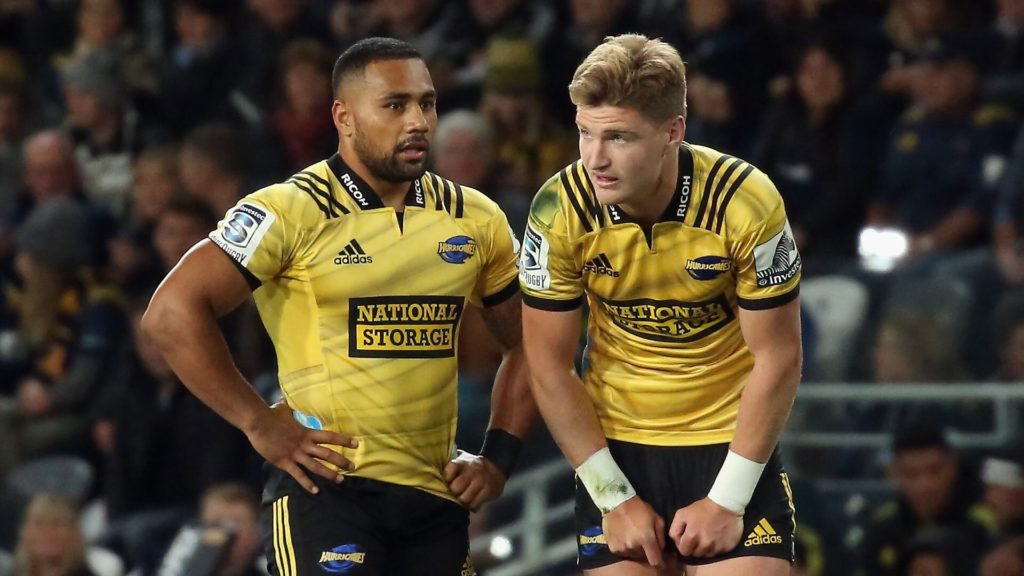
The in-phase switch is the most under utilised play in the game, yet anytime it happens, a defensive line seems to lose its shape with regularity. Those on the outside switch off, those on the inside have not been programmed to expect it. It is a useful tool to disarm a defensive line.
The beauty is the weakness is not visible at first. It appears in the defensive line after the ball leaves the ruck, when the defence pushes off the line towards where the ball is going, leaving a vulnerability inside that can be hit with a switch of play.
The Hurricanes have integrated these types of plays into their phase play to catch the opposition napping around the ruck.
Against the Blues last year, the Hurricanes would use switches to funnel play back towards the ruck. In this concept, after getting the ball at first receiver, Jackson Garden-Bachop plays Ngani Laumape underneath on a switchback towards the ruck, then Laumape hits Jordie Barrett (15) steaming onto the ball through the ruck channel unsighted.
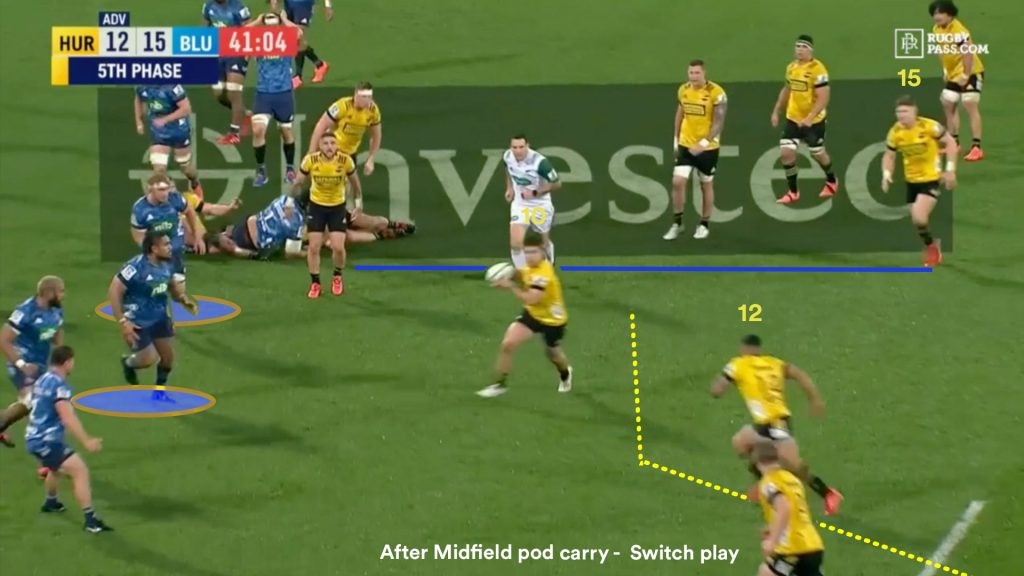
The play preys on the natural tendency of a defence to push and chase, particularly the interior defenders. As the ball is played to Garden-Bachop, the Blues interior defenders are pushing outward in anticipation of the ball continuing wider.
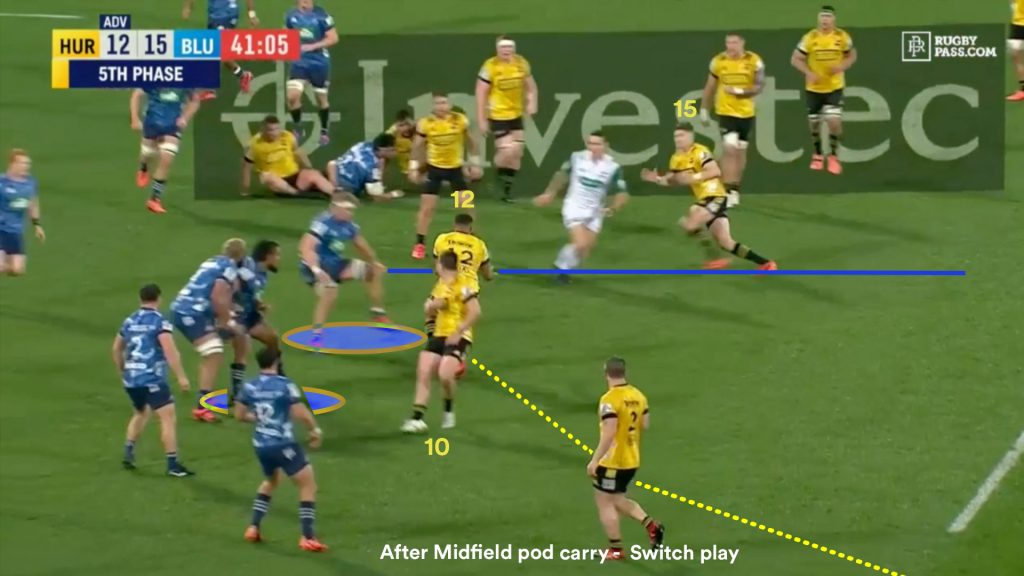
The lane for Barrett became wide open as the Blues defenders on the other side of the ruck have not anticipated being required on the play.
The Hurricanes tinkered with these plays against their opposition last year. Against the Crusaders in Christchurch the play was well covered, Sam Whitelock was aware of the presence of Barrett and made sure their interior defence wasn’t comprised.
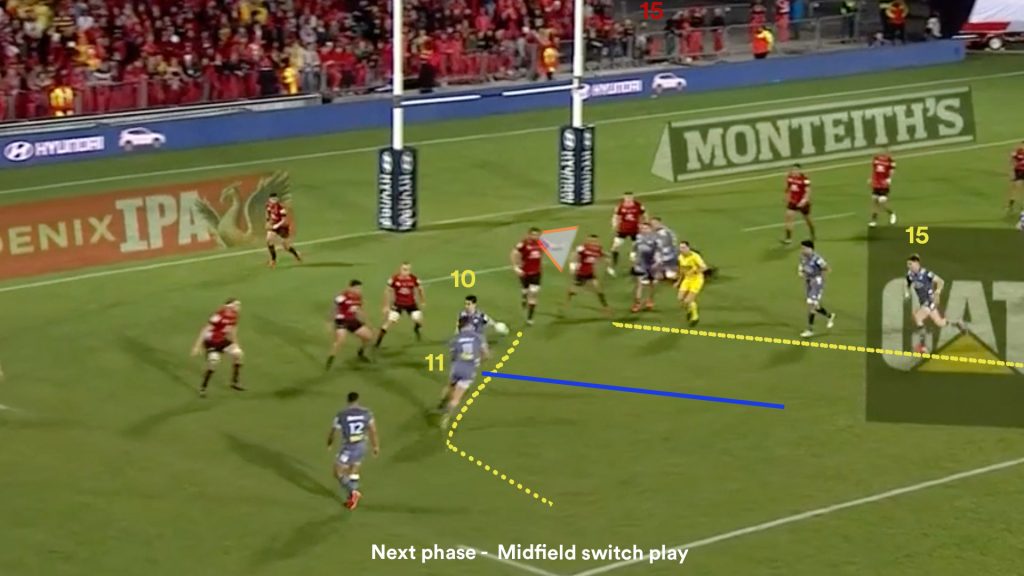
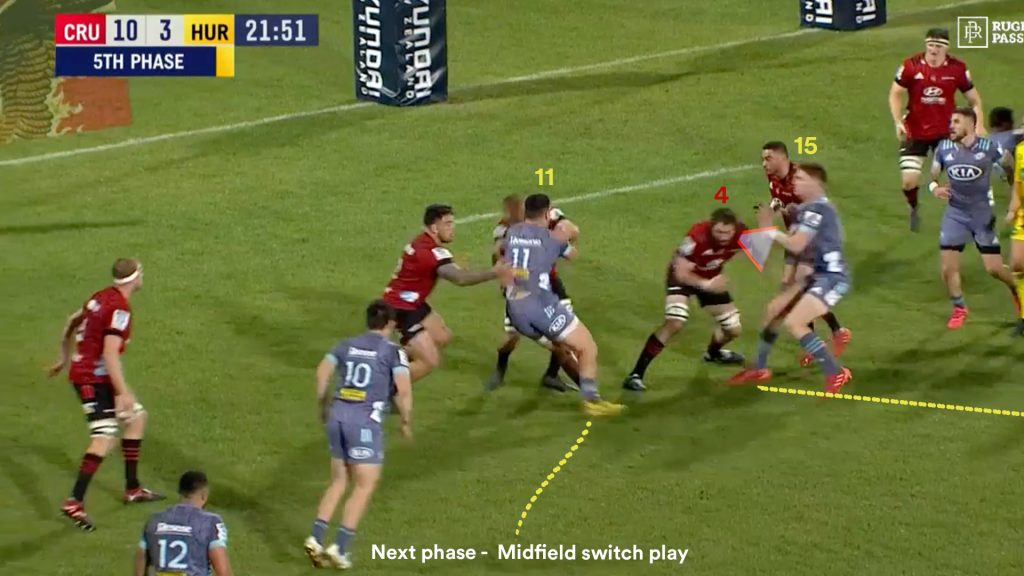
In 2021, the Hurricanes are evolving the concept using a consortium of players in different roles to continue to funnel play back around the ruck where disconnections in the defensive line form. This year, they have implemented a forward pod to run the switch of play.
Early in the match against the Highlanders, a disconnect in the defensive line is clearly visible around the ruck as the Highlanders want to bring pressure at the Hurricanes pod. The presence of this would be exploited later in the half with a new Hurricanes pet play.
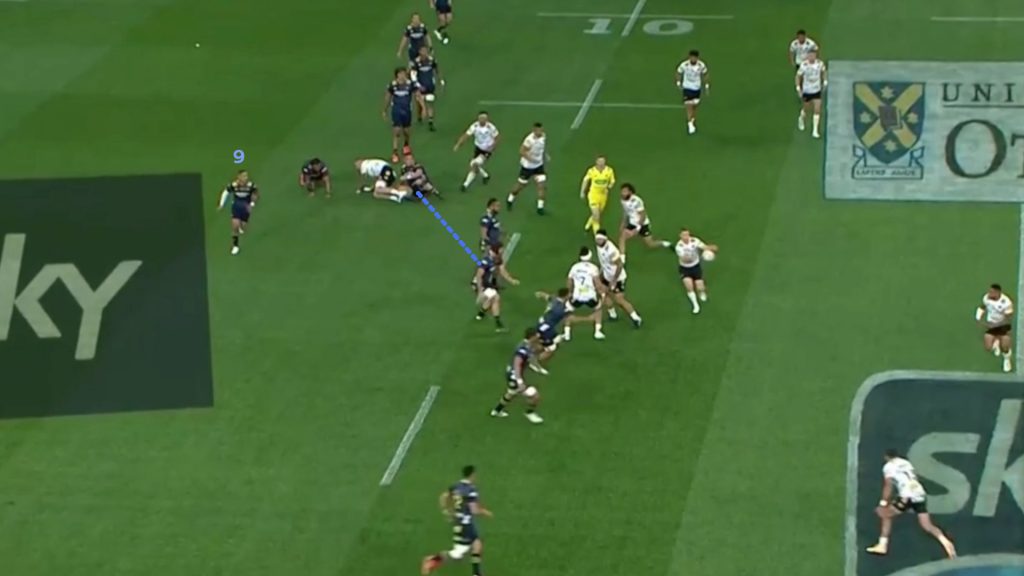
Although All Black Aaron Smith is a world-class halfback, his defence can be suspect at times. It’s never a question of effort, it’s just execution and he often slips off the bigger man.
The Hurricanes would have no doubt understood his role as sweeper in behind the Highlanders defence, and that funnelling strong runners back through the gate around the ruck would send big men into his path.
Before the Hurricanes struck gold with their first try using this pattern, we see Ngani Laumape (12) preparing to be the ball carrier on the strike line back inside. A defending Highlanders player actually points out Laumape as a threat and the Hurricanes opt to hold off on using the strike runner.
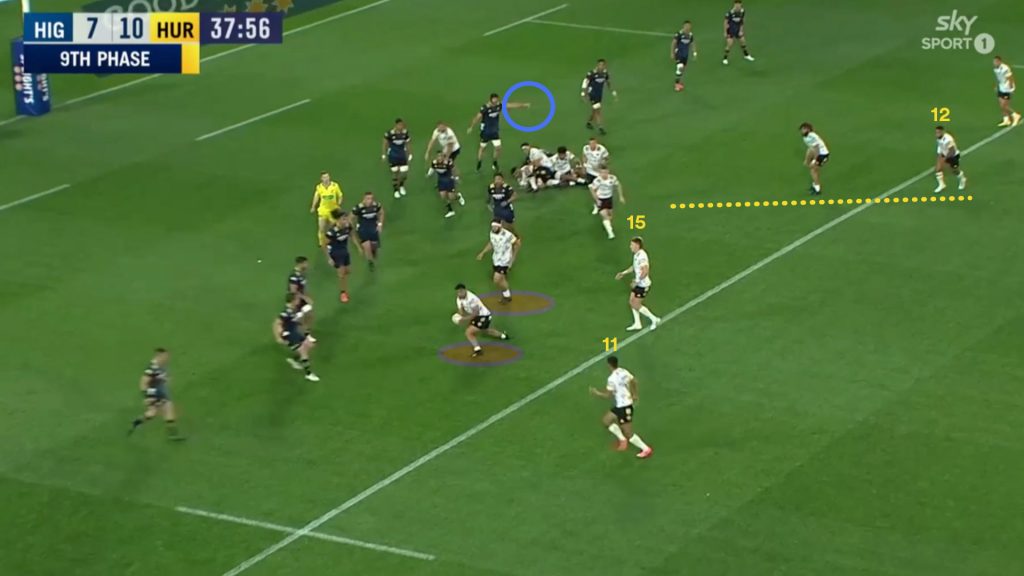
A few phases later, the Hurricanes have a much better set-up in place to now run the switch play.
They have a well formed pod, with Jordie Barrett the game driver in the back. Both wingers have moved off the flanks, Salesi Rayasi (11) has positioned himself to be a strike runner and so has Wes Goosen (14).
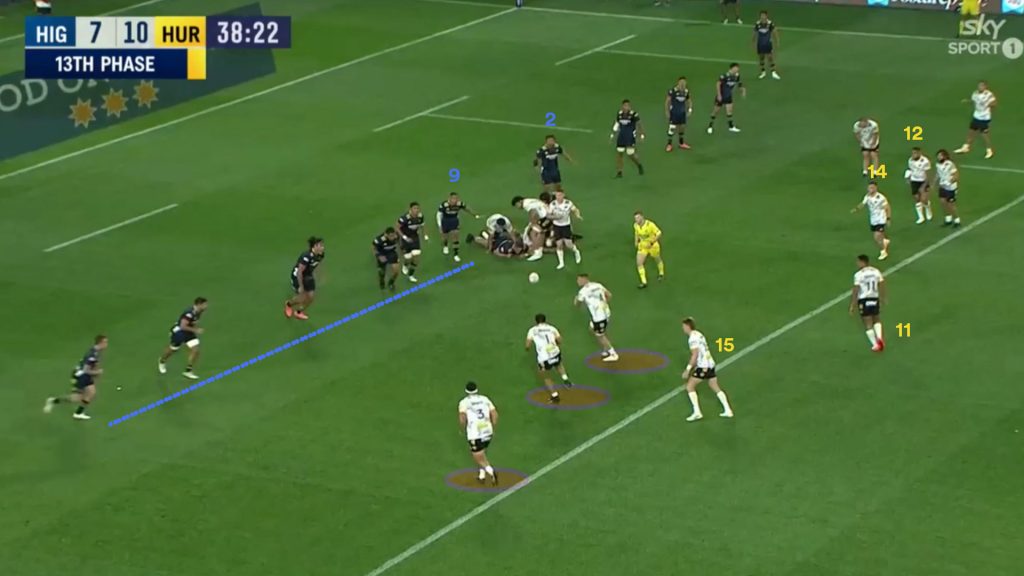
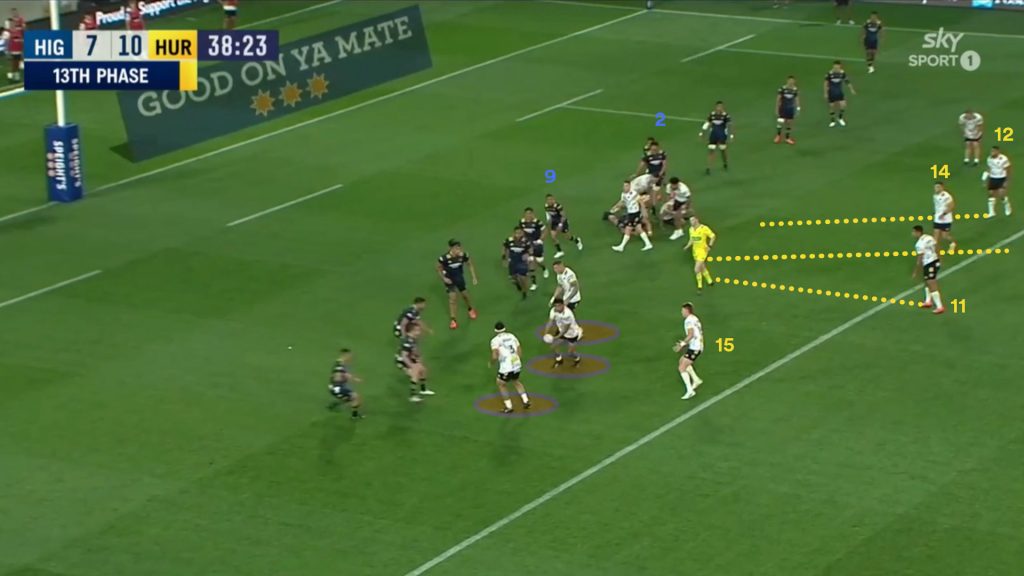
The Hurricanes have potentially three dangerous threats that can be fired into the Highlanders weak ruck channel if they wish to use them. On this occasion they send both wingers into the channel.
As the pod begins the pass to Barrett, we can see the Highlanders interior defence all pushing out in pursuit of the ball, opening up the gap for the Hurricanes to attack.

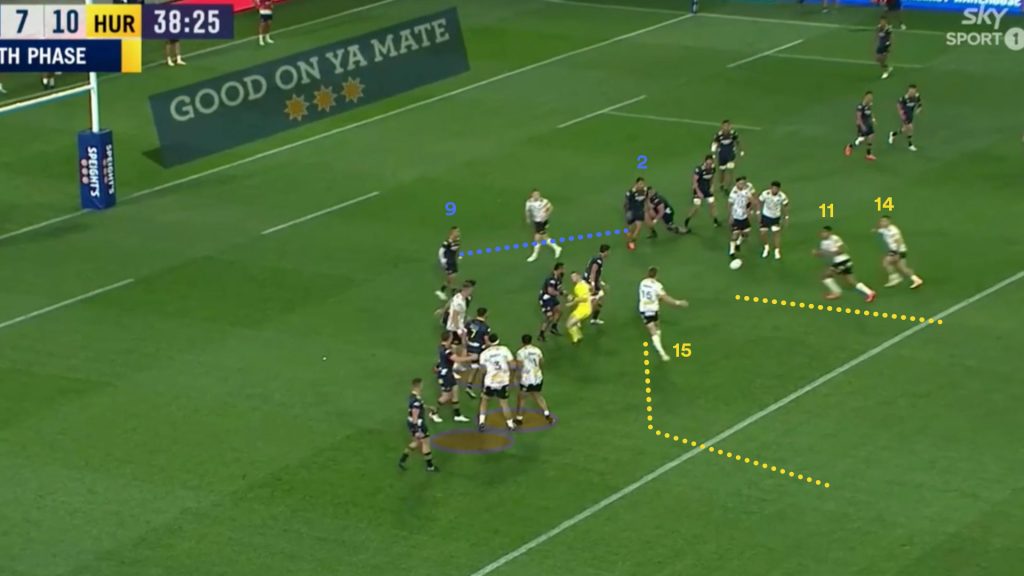
Barrett doesn’t have to do much but feed the ball back inside to the powerful Rayasi (11) early enough for him to make use of the soft underbelly of the Highlanders defence.
One of last year’s form players of the Mitre 10 Cup, Rayasi is given the opportunity to carry up the middle against Aaron Smith (9) and Ash Dixon (2). He punctures the Highlanders line well, before providing a round-the-back offload to Barrett in support.
Perhaps only players with rare skills like Rayasi can offer a finesse offload like this, but even without it, they had still made massive inroads – proving the tactic can be successful at making easy gain line.
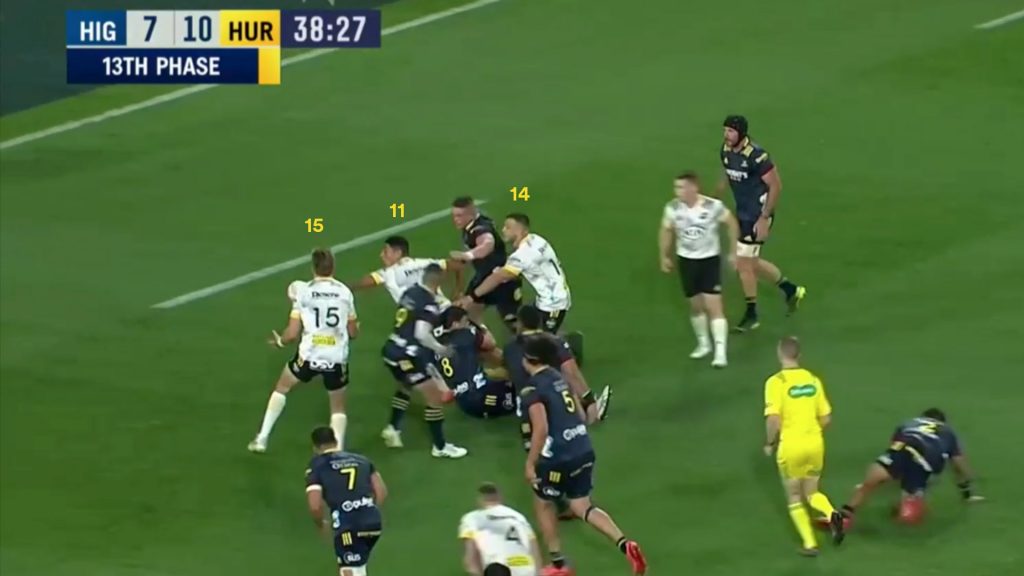
The well-worked switch paid off handsomely as Barrett dived over untouched to score from Rayasi’s deft flick pass.
The brilliance of the play is how it turns a strength into a weakness. If the defence brings fast line speed, the gap is likely to be wider. When a tired tight five forward is stationed as a pillar defender on the opposite side of the ruck, the chances of success increase even more.
On this occasion it was hooker Dixon caught out on the other side, forced to scramble to make a cover tackle on a winger.
By bringing infield some of the most powerful runners in the Hurricanes line up, mismatches are there to be had.
The brilliance of the play is how it turns a strength into a weakness. If the defence brings fast line speed, the gap is likely to be wider.
Laumape, Rayasi, and even Barrett himself, are big solid runners who know how to hit a line. Another one in the stable is Peter Umaga-Jensen, who is a gifted ball carrier with great anticipation for a gap.
The Hurricanes do like to switch it up and rotate these roles around, and in the second half it was Laumape as the game driver running the switch while Barrett was loaded as the strike runner gunning for the gap.
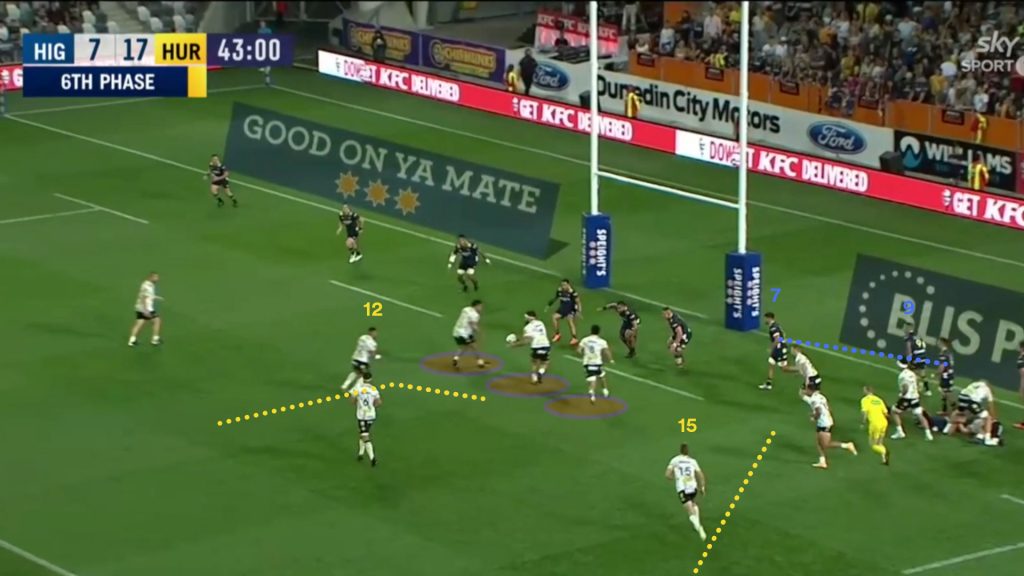

As Highlanders flanker Billy Harmon (7) presses forward to take care of Laumape cutting back, it only widens the chasm between the ruck, with Aaron Smith (9) in behind as protection.
When the inside pass is made to Jordie Barrett, only Smith remains directly in his path. Some slight contact from halfback Luke Campbell on Harmon keeps the gap wider for just a split second longer.

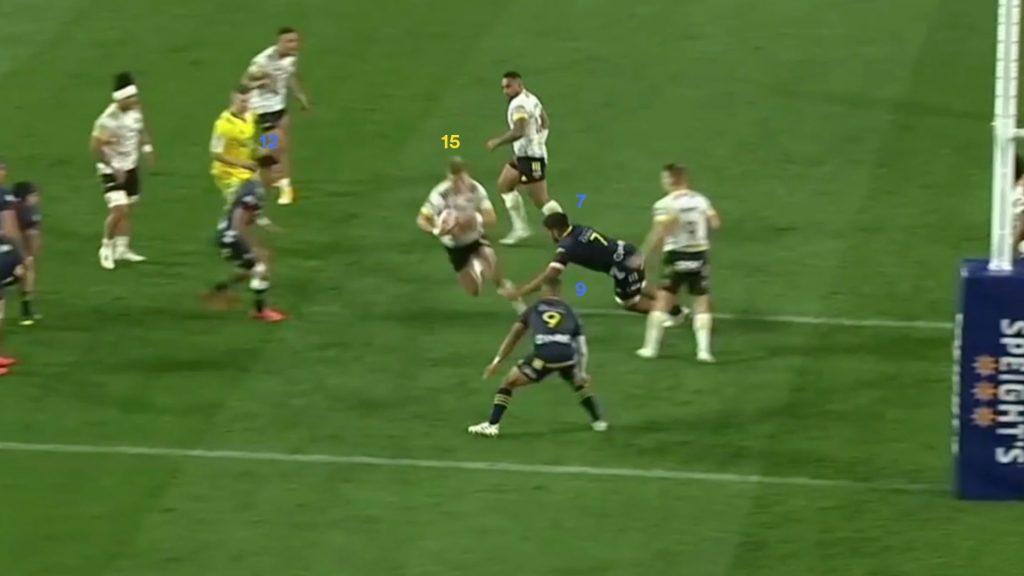
At speed there is no one that is going to stop Barrett from this close, and the Hurricanes fullback collected his third try of the game piledriving over Aaron Smith.
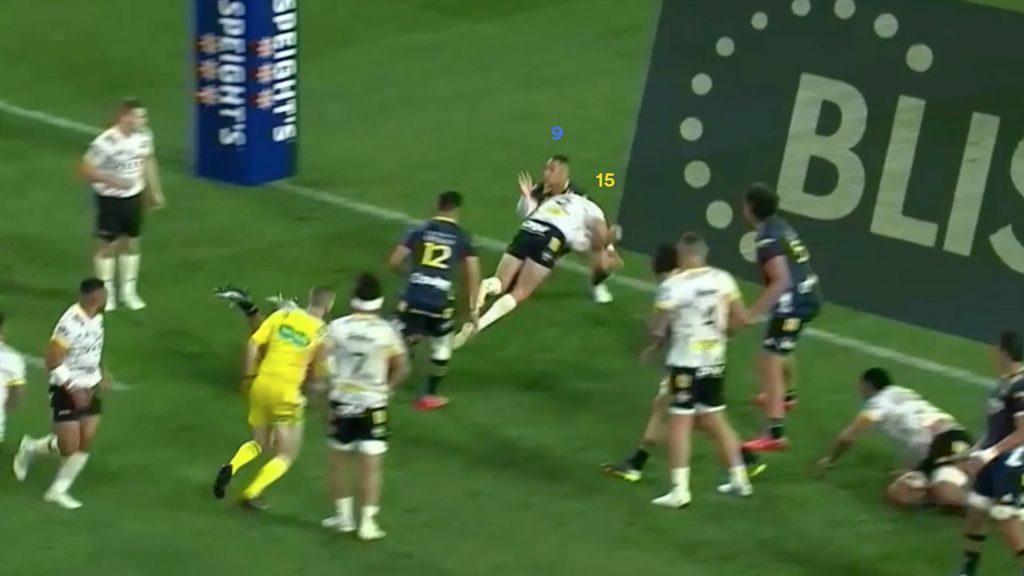
These switch plays that funnel play back towards the ruck have not been explored with much regularity, and the Hurricanes seem to be the first team to pioneer their use.
During the Rugby World Cup, Japan would run supersets that combined similar concepts in hitting one spot over and over from a launch pattern, but without as much emphasis on a deep switch of play. If they ran switches, it would be flat off halfback Yutaka Nagare, without bringing the line forward as much.
The Hurricanes have proved the switch can not only be a counterbalance to aggressive line speed, but completely disarm a defence altogether with some clever design. The ‘specials’ in the playbook for the Highlanders were perfect as it put Aaron Smith’s defence under the spotlight.
The Highlanders don’t want their star halfback making many tackles and it is publicly known that Smith is being ‘managed’ towards the 2023 World Cup. Having to make front on tackles on Ngani Laumape, Jordie Barrett and Salesi Rayasi is certainly not part of that preservation plan.
After an 0-3 start, the Hurricanes put together a worthy performance in Dunedin and it was their innovative plays that made the difference in the end.


Comments
Join free and tell us what you really think!
Sign up for free